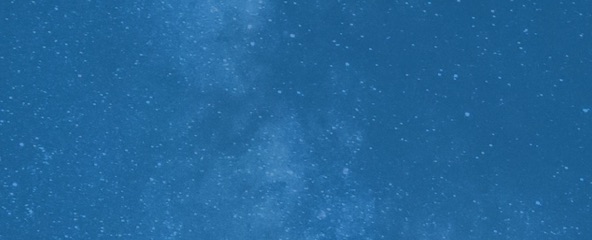
Lisa Grossman is the astronomy writer for Science News. Previously she was a news editor at New Scientist, where she ran the physical sciences section of the magazine for three years. Before that, she spent three years at New Scientist as a reporter, covering space, physics and astronomy. She has a degree in astronomy from Cornell University and a graduate certificate in science writing from UC Santa Cruz. Lisa was a finalist for the AGU David Perlman Award for Excellence in Science Journalism, and received the Institute of Physics/Science and Technology Facilities Council physics writing award and the AAS Solar Physics Division Popular Writing Award. She interned at Science News in 2009-2010.

Trustworthy journalism comes at a price.
Scientists and journalists share a core belief in questioning, observing and verifying to reach the truth. Science News reports on crucial research and discovery across science disciplines. We need your financial support to make it happen – every contribution makes a difference.
All Stories by Lisa Grossman
-
 Astronomy
AstronomyColliding neutron stars shot a light-speed jet through space
A stream of particles created in a neutron star crash, detected in 2017 using gravitational waves, could explain certain mysterious flashes of light.
-
 Planetary Science
Planetary ScienceNeptune’s smallest moon may be a chip off another moon
Neptune’s tiniest moon probably formed when a comet hit a larger moon.
-
 Planetary Science
Planetary ScienceMars’ lake may need an underground volcano to exist
If a lake under Martian ice is real, there must be a subsurface magma pool to keep conditions warm enough for water to remain liquid, scientists say.
-
 Physics
PhysicsThe quest for quasicrystals is a physics adventure tale
In ‘The Second Kind of Impossible,’ physicist Paul Steinhardt recounts his journey to find quasicrystals in nature.
-
 Planetary Science
Planetary ScienceAfter 15 years on Mars, it’s the end of the road for Opportunity
After 15 years of exploring Mars, a dust storm led to the demise of NASA’s longest-lived rover.
-
 Planetary Science
Planetary ScienceA basketball-sized rock hit the moon during the last lunar eclipse
Professional and amateur astronomers joined forces to analyze the impact.
-
 Planetary Science
Planetary ScienceTitan’s oddly thick atmosphere may come from cooked organic compounds
Saturn’s moon Titan might get some of its hazy atmosphere by baking organic molecules in a warm core.
-
 Planetary Science
Planetary ScienceNASA’s Curiosity Mars rover weighed the mountain it’s climbing
Curiosity measures gravity as it drives, allowing scientists to weigh Mount Sharp and determine that the rock is less dense than expected.
-
 Planetary Science
Planetary ScienceThe latest picture of Ultima Thule reveals a remarkably smooth face
Kuiper Belt object MU69, nicknamed Ultima Thule, is largely unmarred by impact craters, suggesting the Kuiper Belt might lack small objects.
-
 Space
SpaceIt’s time to start taking the search for E.T. seriously, astronomers say
Astronomers are hoping to make looking for alien technology an official science goal of NASA.
-
 Planetary Science
Planetary ScienceRing ripples reveal how long a day lasts on Saturn
Clues in Saturn’s rings divulge the planet’s rotation rate: 10 hours, 33 minutes, 38 seconds.
-
 Planetary Science
Planetary ScienceThe moon’s craters suggest Earth hasn’t erased lots of past impacts
A new look at moon craters suggests the Earth and moon suffered more impacts in the last 290 million years, and the Earth retains its biggest scars.